Bless their hearts, I can't imagine the desperation and trauma from enduring an experience such as theirs. I'm so happy that they were found and rescued. I hope they have gotten help with their ptsd and that it continues to improve for them.
A Man Who Stuck for 3 Days at the Bottom of the Ocean
We’ve heard stories about people surviving in the desert, Amazon forest, and uninhabited islands for weeks. Such stories show how tough and resilient people can be. But among these many cases, there is one that can really amaze you. It’s the story about a guy who spent three days inside a sunken ship at the bottom of the Atlantic Ocean. He didn’t have oxygen tanks, electricity, communications, or food, but he survived. So, it all happened in 2013 on a tugboat that was moving through the Atlantic waters along the coast of Nigeria. That day, early in the morning, there was a small storm. The tug was pulling a vessel with oil tanks. Then, all of a sudden, a huge wave formed. It crashed into the ship and broke the cable. At 4:30 a.m., the tugboat turned upside down. Its entire deck was underwater, and the ship’s hull stuck out from the surface. The boat began to sink slowly. The crew of 12 people were trapped as they all were in their locked rooms.
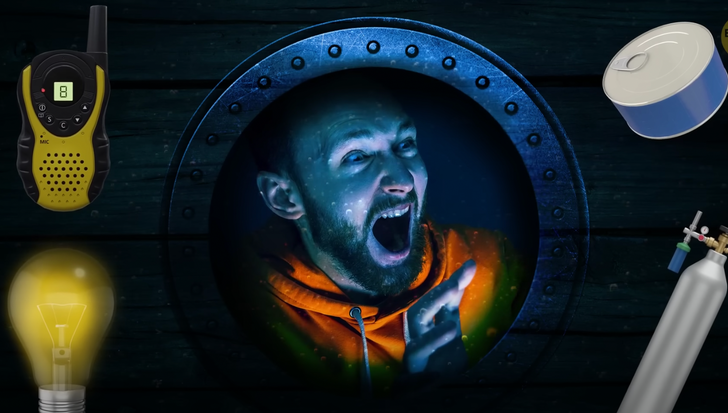
They had closed the doors in their cabins as a precaution since there were many pirates in those waters. Because of the locked rooms, they couldn’t get out. But one of them, cook Harrison Okene (o-KE-na) was in the bathroom during this time. The bathroom turned over. Harrison fell on the ceiling. All the clothes and toilet shelves fell on his head. He was stunned and didn’t understand what was happening. When he heard the screams of the other crew members, he realized that the ship was sinking. Harrison struggled to his feet. Holding on to the walls, he slowly went out of the cabin. The water level rose above his head. Harrison took a deep breath. He intuitively, driven by fear, reached the engineering room. There was a small pocket with air. This space wasn’t wholly flooded since the water didn’t get there, and the air hadn’t come out.
Harrison realized that this was the safest place for him at that moment. He had no fresh water and no food. He was in a cold, damp room. The floor was flooded, and Harrison’s feet began to freeze. There was almost no chance of survival. The man found a soda bottle inside the room and a life jacket with two flashlights attached to it. By this time, the ship had descended to the bottom of the ocean at a depth of 100 feet. This is about the height of a 10-story building. The ship’s hull was squeezed and made a grinding noise due to the pressure of the water. Then Harrison heard a strange movement outside the door. It was sharks and other fish that were investigating the deck. At this point, Harrison began to lose hope.
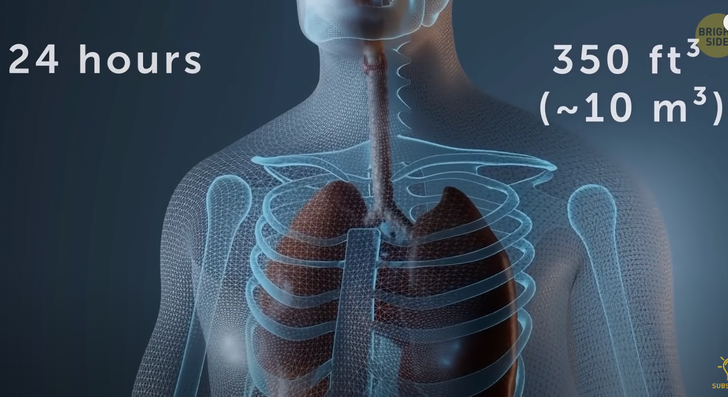
Lack of food supplies and pressure weren’t the main problems. The air pocket was small, which meant there was little oxygen. Every 24 hours, an average person consumes about 350 cubic feet of air. Which means Harrison had less than one day left to breathe. But despite this, he lived in such conditions for about 60 hours. This happened thanks to the water. The pressure around the ship was so intense that it compressed the air by about 4 times. Another problem was the cook’s breathing. When we inhale, we absorb oxygen. When we exhale, we release carbon dioxide. This substance is dangerous to your health if its concentration in the air is 5%. Harrison slowly filled the room with carbon dioxide. And he couldn’t get out. With each hour, it became harder to breathe. But here again, he was lucky. Water absorbs carbon dioxide. And Harrison moved and splashed it in different directions. Thus, unknowingly, he increased the water area and kept the carbon dioxide level below critical.
But even here, his dangers were not over. Hypothermia may occur in a dark, cold room. It’s a condition when your body temperature drops below 95F. You get cold, and your perception of the world gets distorted. You don’t understand where you are and what’s going on. You may lose your memory and even experience “terminal burrowing”. This weird behavior occurs during hypothermia when a person tries to find a small shelter even if they’re in a closed room. They can even start digging the cold floor with their bare hands. At the same time, a person quickly freezes and loses consciousness within two hours. Harrison’s room was filled from below with icy water. He wouldn’t have survived in such conditions if he had stayed on the floor for several hours. But he managed to build a small platform with a mattress. This kept him slightly above the water level. With each passing hour, fear and despair more and more bound the survivor’s mind.
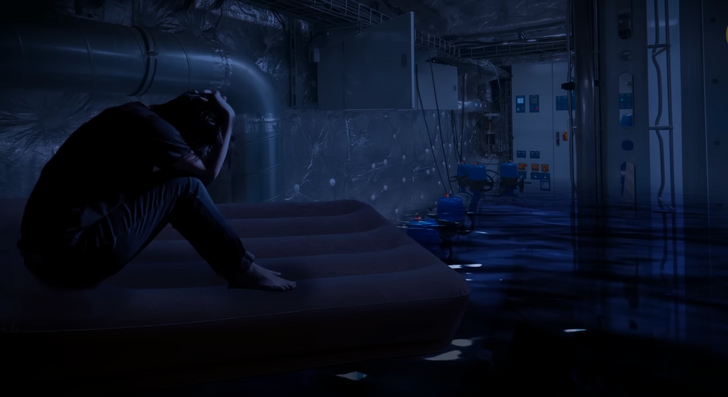
He couldn’t get out for many reasons. One of them was that only a little sunlight passes to such a depth, and Harrison couldn’t see it. The soda bottle was almost empty, and the flashlights stopped working. The man found himself in pitch darkness. But his salvation was close. While rescuers were searching for survivors nearby, he was thinking about his family and life. Harrison noticed rays of light through a hole in the wreckage. Divers were examining the seabed. It was the only chance to survive. Harrison came out of the air pocket and swam towards the rescuers. He was making his way through the darkness. The ray of light coming from the diver’s flashlight disappeared. Harrison tried blindly to find the diver, but they were at the other end of the deck. His oxygen was running out, so Harrison decided to return. There was almost no air left in his lungs. He began to suffocate but still got to the rescue room.
The main thing was not to despair. It was his only chance for salvation. After catching his breath and replenishing the oxygen supply in his lungs, Harrison made a second attempt. He got out of the room and noticed the diver. He swam towards them with all his might. The lifeguard didn’t see Harrison, so the cook knocked on his neck from behind and grabbed his hand tightly. The diver was initially scared, but he realized a living person was in front of him. Harrison swam to his room and led the lifeguard as his oxygen ran out. You can easily find a recording from the diver’s camera on the Internet, where the frightened Harrison was in his rescue room during a meeting with the diver.
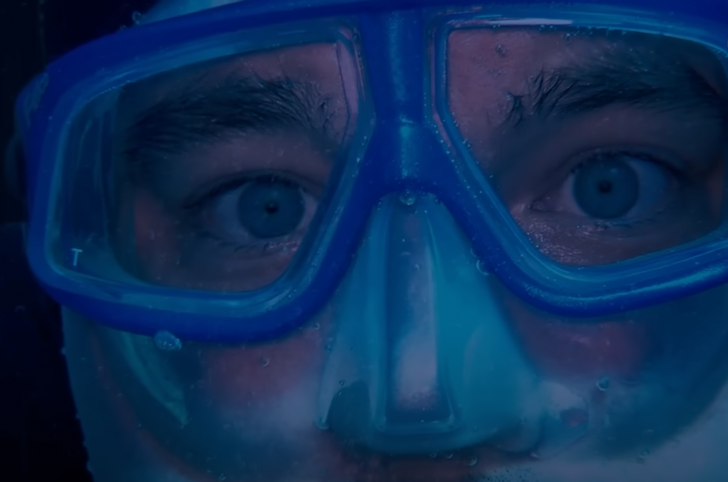
The rescuers gave him an oxygen mask. They didn’t believe there was a living person in front of them. Harrison couldn’t immediately get to the surface because of the pressure. He spent about 60 hours on the seabed, so he needed to change the pressure level slowly to prevent damage to his health. Therefore, the divers put him in a decompression chamber to gradually reduce the external pressure. Then, when Harrison got out, he saw the stars. The cook thought he had been at the bottom of the ocean all day. So, he was surprised when he found out that he had been underwater for 60 hours. Also, he thought that all the crew members had forgotten about him and left the ship at the beginning. Many years have passed since then, but Harrison still has nightmares about his air room. Sometimes he wakes up in the middle of the night and tells his wife that the bed is sinking and they’re now at sea.
A similar case occurred in 1991 with scuba diver Michael Proudfoot. He was studying a sunken submarine off the coast of Baja, California. During this dive, he accidentally broke his breathing regulator and deprived himself of oxygen reserves. Michael couldn’t get to the surface because he was too deep. He wouldn’t have had enough air in his lungs. Fortunately, the diver found an air pocket inside the ship. He swam there and waited for rescuers. For two days, he was underwater in complete darkness. He ate raw sea urchins and drank a small amount of warm water from a found pot. Fortunately, rescuers found him. Michael Proudfoot got out of the trap and stayed alive.
Comments
Related Reads
22 Happy Couples Shared Photos Through the Years of Their Relationship

13 Families Who Could Star in Their Own Dramatic Soap Opera

12 Disturbing Secrets People Realized Only Later On

10 Dads Who’d Move Mountains to See Their Kids Smile
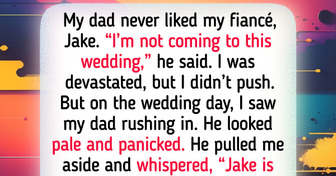
12 Wild Stories That Prove Cheating Isn’t For the Faint-Hearted

My Stepdaughter Hates Me, but She’s About to Learn the Truth—It’s Time for a Reality Check

My Sister-in-Law Secretly Performed a DNA Test on My Toddler

15 Family Secrets That Could Top Google Searches

20 Family Members Who Turned Out to Be Wolves in Sheep's Clothing

12 True Stories That Get Creepier the More You Read
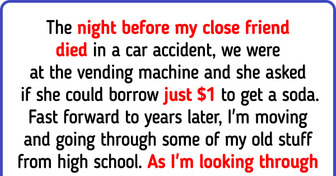
15 Shocking Stories That Prove Not Every Teacher Is a Good One

12 Stories About Surprises That Can Await Us on a Journey
